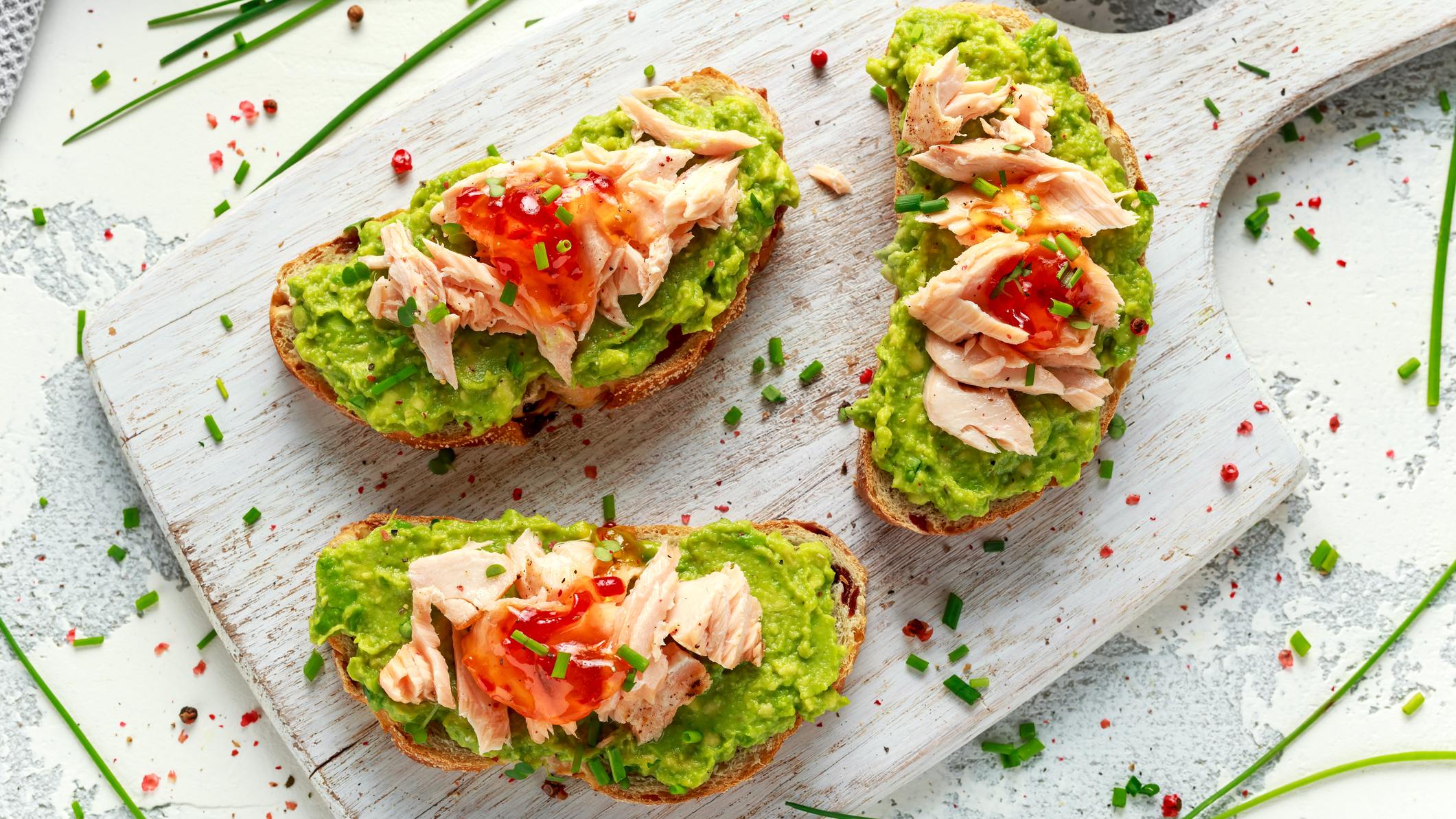What is an anti-inflammatory diet? How to eat your way to long-term health
The anti-inflammatory diet involves prioritising foods that it's claimed will help bolster your body, to ward off future chronic disease


An anti-inflammatory diet is an approach to nutrition grounded in boosting your health, in order to protect you from conditions including cancer, heart disease, and diabetes.
It involves piling your plate high with foods rich in compounds that will help reduce inflammation in the body, as well as limiting foods that exacerbate it.
Sound intriguing? We've called on leading experts to explain exactly how eating in an anti-inflammatory way works, as well as the foods to prioritize and the ones to avoid. As you'll see, it's far easier to follow than something like the Whole 30 diet or the keto diet, and many of the items you'll be encouraged to add to your shopping list provide the basis of most of your favorite healthy meals. As well as the key benefits, we'll also reveal if there are any downsides to be aware of...
What is the anti-inflammatory diet?
First, it's important to understand what inflammation is and how it can affect your health. "Everyone will have experienced the redness, swelling, and heat that occurs when you cut yourself—this is known as acute inflammation and is a short-lived process to help trigger the healing process and prevent infection," explains nutritionist Rob Hobson, who is working with the organization British Apples and Pears. "Chronic inflammation normally begins with the same response to illness or injury, but stays active at a low level for months or years." He explains that this can lead the immune system to direct white blood cells to attack nearby healthy tissues and organs. It's thought this may play a central role in a number of conditions, including rheumatoid arthritis, cancer, heart disease, diabetes, asthma, and Alzheimer’s disease.
This is where good nutrition comes in. "An anti-inflammatory diet comprises of foods that focus on trying to reduce inflammation—like fruit and vegetables, as well as whole grains, lean protein, healthy fats, and spices," explains Penny Weston, a nutrition and fitness expert. "It also requires avoiding ones that increase it—like sugary and processed foods." She notes that the much-revered Mediterranean diet, for example, is an eating regime full of anti-inflammatory foods.
Hobson explains that it is particular compounds found in certain foods that have been shown to have an anti-inflammatory effect. "These include the polyphenols, carotenoids, anthocyanins, and lycopene present in brightly colored fruits and vegetables—notably blue, purple, orange, red, and pink produce," he says. "Then there's the immunity-boosting flavonoid quercetin, of which apples are a rich source."
What can you eat on the anti-inflammatory diet?
- fruits and vegetables (especially apples and dark green leafy varieties)
- whole grains, including oats, wholemeal bread, pasta, and rice
- beans, pulses, and lentils
- oily fish, including salmon, trout, mackerel, herring
- nuts and seeds
- extra virgin olive oil
Foods you should try to limit on the anti-inflammatory diet
- refined carbohydrates, such as white bread, pasta, and rice
- sugar and all other sweeteners, including honey, agave, and syrups
- sugary drinks (although a daily serving of fruit juice is ok)
- red/ processed meats
- fried foods (like chips and other takeaway offerings)
Are there health benefits to the anti-inflammatory diet?
"The anti-inflammatory diet is designed to help reduce inflammation in the body, which is thought to be at the root of many chronic diseases," says Hobson. Like Weston, he notes that the eating regime is very reflective of the Mediterranean diet, which research has found to be one of the healthiest ways to eat. Indeed, one study found that adhering to an anti-inflammatory diet for just a year improved gut health with benefits to brain function and a boost for longevity.
Sign up to our free daily email for the latest royal and entertainment news, interesting opinion, expert advice on styling and beauty trends, and no-nonsense guides to the health and wellness questions you want answered.
What's more, the foods on your anti-inflammatory shopping list are all known to be packed with the good stuff, notes Rosie Millen, nutritionist at gut health brand Bio-Kult. "You're consuming fruit, vegetables, oily fish, lean protein, legumes, nuts, and seeds—they are all very nutrient-dense," she points out. Additionally, there's the opportunity to fuel up on the fiber-boosting, slow-release energy of a variety of ancient grains—great if you often feel tired in winter.
Additionally, unlike eating regimes such as the restrictive paleo diet, this is a more sustainable, nourishing approach to mealtimes. "You’re typically reducing your intake of sugary and processed foods, but you’re not trying to embark on a faddy, restrictive diet," says Weston. "Because you're eating a diet rich in nutrients, you may notice other benefits, including healthy weight loss."

Does the anti-inflammatory diet have any downsides?
What's clear is that the downsides to eating in an anti-inflammatory way are few. "Some people might be concerned about the time taken to prepare fresh plant-based foods rather than eating pre-packaged, however, there are many meals that can be made from scratch in a short amount of time or batch-cooked in advance," says Weston. "It’s more a case of getting used to it." Hobson agrees, noting that understanding how the diet works may require a bit of education, but he doesn't necessarily consider this as a negative—and you could use one of these handy goal planners to help get you organized.
Additionally, while the eating regime is rich in a wide variety of vitamins and minerals, there are two nutrients that you may need to get some extra helpings of. "The lack of dairy products may mean there is some nutrient deficiency in vitamin D and calcium," warns Millen. However, one of the best sources of vitamin D is sunlight, and it can also be found in mushrooms and oily fish.
Meanwhile, other sources of calcium include green, leafy vegetables as well as pulses. She adds that those with allergies to products like nuts and shellfish should also be careful since they feature frequently. Similarly, if you tend to be more plant-based, it's worth considering the best sources of vegan protein.
womanandhome thanks nutritionist Rob Hobson, who is working with British Apples and Pears as part of their Healthy Body campaign, Penny Weston, a nutrition and fitness expert, and Rosie Millen, nutritionist at gut health brand Bio-Kult, for their time and expertise.
This article is for general interest and is not intended to suggest a course of action that might be suitable for you. Always consult a licensed healthcare professional before making decisions concerning your health and wellbeing.

Lauren is a freelance writer and editor with a decade of print and digital journalism experience. While she specialises in covering health and wellness topics - ranging from nutrition and fitness, to women’s health conditions and mental wellbeing - she has written across a diverse range of lifestyle topics, including fashion, beauty, homes, royals and travel.
In addition to writing for Woman & Home and sister title Homes & Gardens, Lauren's work has also been published by Women’s Health, The Times, Daily Telegraph, Elle, Cosmopolitan, The Guardian, Marie Claire, Body + Soul, Stylist, Glamour, Grazia, Red, Dazed Digital, Yahoo Life, The Sun’s Fabulous, Get The Gloss and Hello! among others.